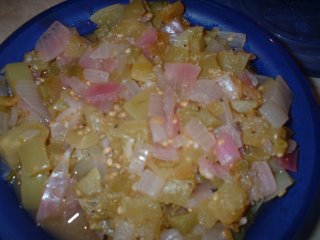 Salsa Verde
Salsa VerdeSalsa Verde is a wonderful way to use up a few green tomatoes. You will need about 14 medium green tomatoes. You can use either unripe green tomatoes or a variety that is green when ripe. If using unripe tomatoes use when the green colour is pale. Green tomatoes contain solanine which can be toxic in large amounts. Dark green tomatoes contain higher levels of solanine so ripen in a brown paper bag until the intense green pales.
Salsa Verde is a nice change from red tomato salsa. It has a unique flavour that goes well with nacho chips as a dip. It can also be used as a topping on crackers or french bread rounds. Spread cream cheese on the crackers or rounds then top with a bit of salsa verde. Salsa Verde can also be used as a condiment on hamburgers or as a meat accompaniment. However you like it, salsa verde is great to have on hand.
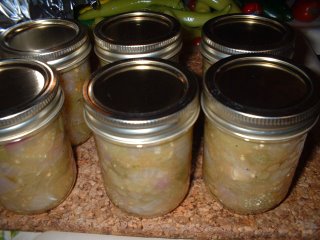 Salsa Verde in Jars
Salsa Verde in JarsThis sauce is pretty in the jars! Any leftovers can be used within a day or two. I think it tastes best when allowed to age at least a month. The flavours meld nicely for a flavourful sauce sure to please.
SALSA VERDE
by: Bernardin, Tomatoes Canning & Speciality Recipes, 2000. Pp. 37
7 cups (1750 ml) chopped green tomatoes, about 3.5 lb (1.6 kg), 14 medium
5-10 jalapeno or scotch bonnet peppers, finely chopped
2 cups (500 mI) finely chopped red onion, about 1 large
1/2 cup (125 mI) lime juice
2 cloves garlic, minced 1/2 cup (125 mI) chopped cilantro
2 tsp (10 mI) cumin
1 tsp (5 mI) oregano 1 tsp (5 mI) Each: salt and black pepper
Place 6 clean 250 ml mason jars in a boiling water canner; fill with water, bring to a rolling boil. Boil SNAP lids 5 minutes - not longer - to soften sealing compound. Keep jars and SNAP Lids in hot water until ready to use. Wash, core, seed and coarsely chop tomatoes; drain off excess liquid. Measure 7 cups (1750 ml). In a large stainless steel saucepan, combine prepared tomatoes, peppers, onion, lime juice and garlic. Bring to a boil. Stir in cilantro, cumin, oregano, salt and black pepper; simmer 5 minutes. Remove from heat. Ladle salsa into a hot jar to within 1/2 inch (1 cm) of the rim (headspace). Using nonmetallic utensil, remove air bubbles. Wipe jar rim removing any stickiness. Center SNAP Lid on jar; apply screw band securely until fingertip tight. Do not overtighten. Place jar in canner. Repeat for remaining salsa. Cover canner; return water to a boil. At altitudes up to 1,000 ft (305 m), process - boil filled jars - 20 minutes. (See page 5, ALTITUDES). Remove jars without tilting. cool upright, undisturbed 24 hours; DO NOT RETIGHTEN screw bands. After cooling check jar seals. Sealed lids curve downward. Remove screw bands; wipe and dry bands and jars. Store screw bands separately or replace loosely on jars, as desired. Label and store in a cool, dark place.
~ Makes about 6-250 ml jars.
My Notes: I replace the screw bands. Let the sauce age for at least one month for the best flavour.

 Tomato Zucchini Experiment
Tomato Zucchini Experiment Herbed Tomato Bread
Herbed Tomato Bread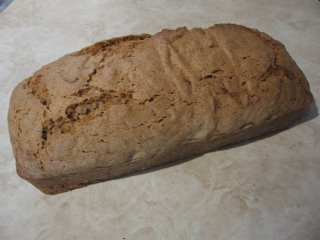 Zucchini Loaf
Zucchini Loaf Corn
Corn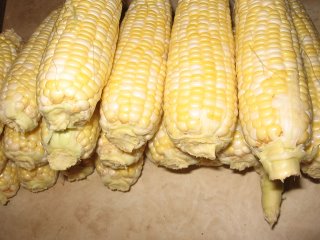 Husked
Husked Blanched
Blanched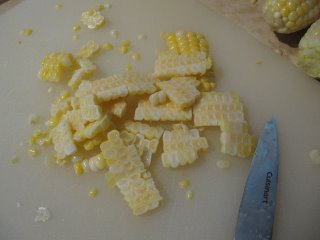 Cut From Cob
Cut From Cob Niblets
Niblets Vacuum Sealed Corn Niblets
Vacuum Sealed Corn Niblets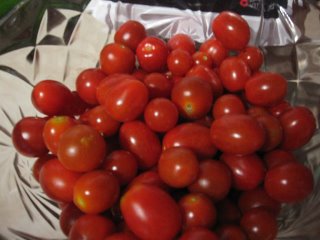 Cherry Tomatoes
Cherry Tomatoes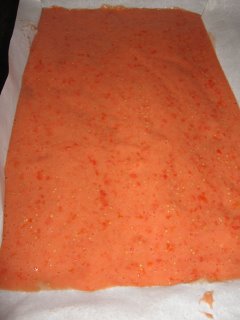 Puree
Puree Dried Tomato Puree
Dried Tomato Puree Tomato Powder
Tomato Powder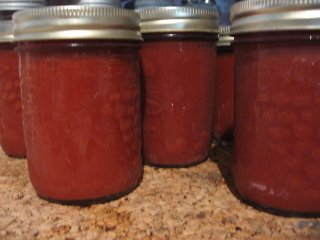 Taco Hot Sauce
Taco Hot Sauce Taco Salad
Taco Salad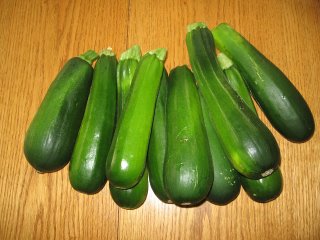 Zucchini
Zucchini Zucchini Chunks
Zucchini Chunks Shredded Zucchini
Shredded Zucchini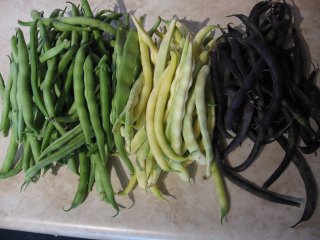 Beans
Beans Canned Beans
Canned Beans Tomatoes
Tomatoes